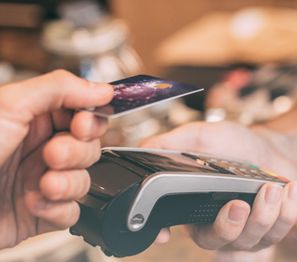
Swipe, tap and thrive: Why every single-location restaurant needs a POS
Learn why a POS system is essential for small quick service restaurants and which features help streamline orders, boost sales, and keep your café running smoothly.

Card testing (also called “carding” or “card checking”) is a type of payment fraud where fraudsters use automated tools or bots to test credit card numbers by making small purchases or attempting to authorize transactions on e-commerce sites.
These attacks typically involve submitting numerous card numbers using automated scripts. They may appear as testing cards on your payment page or attempting to add a card-on-file via the account profile page, which typically requires a card verification. The goal is to find out which cards are still active and have available credit. Preventing these attacks requires applying multiple layers of security and controls.
To stop or reduce card testing on your site, implement the following best practices.
1. Use the Moneris Checkout (MCO) hosted payment solution
MCO has built-in payment fraud detection tools which are easy to enable without any additional integration effort
Ensure you’ve enabled fraud prevention tools like AVS (Address Verification System), CVV (Card Verification Value), 3D Secure, Kount and minimum transaction amount limit
Enable auto-decisioning to prevent potential card testing transactions from being sent to the Issuer for authorization
MCO leverages Cloudflare, a cloud company security provider that offers enterprise-grade firewall protection against DDoS attacks, malicious bots and other web security vulnerabilities
2. Implement bot protection (CAPTCHA)
Most card testing attacks use scripts and automated tools to quickly test a large number of cards on a merchant website
Use Google reCAPTCHA v3 or hCaptcha on your checkout and payment forms
Google reCAPTCHA v3 provides a score between 0 and 1 to help identify potential bot activity, without requiring user interaction
hCaptcha presents users with a challenge, such as identifying images—easy for humans but difficult for bots
3. Rate limiting and device fingerprinting
Card testing often involves high-frequency attacks using stolen or generated cards
Set up rate limiting on how many times a user/IP can attempt a transaction in a short period
Use device fingerprinting to track suspicious devices and compare them with known fraud patterns
4. Monitor transaction patterns
Card testers often submit many low-value transactions or multiple failed attempts
Flag accounts with excessive failed attempts
Watch for multiple transactions from the different accounts using the same email or device
Monitor for patterns like many small purchases, rapid transaction submissions, or unusual card BINs (Bank Identification Numbers) for example: a card issued in a foreign country.
Use the Moneris Kount Enterprise solution for real-time fraud monitoring
5. Use velocity, threshold and user rules
Legitimate customers typically do not make multiple rapid-fire transactions
Limit the number of attempts per IP/device/account/email/card number per hour/day
Block suspicious IPs or locations, for example: a user who normally logs in from Vancouver suddenly makes a high-value purchase from an IP in Germany, using a VPN, and ships to a P.O. box in Florida. That combination would likely trigger fraud alerts.
Use Web Application Firewalls (WAFs) such as Cloudflare Bot Management, to block card-testing patterns
User rules:
Require the user to register before checkout and add verification such as a code or email confirmation
Limit the number of user accounts that can be added in a certain period
Limit the number of cards that can be added to a customer account
Add a session time limit with a timeout mechanism
6. Log and analyze failed transactions
Card testing can often be detected early by monitoring transaction declines
Set up alerts for a sudden spike in declines
Analyze logs to identify common IP addresses and devices used in attacks
7. Protect your API keys
If your API token is compromised, attackers can bypass your website entirely
Re-generate your Moneris API token in the Moneris Resource Center: Ensure refunds, voids, or pre-authorizations are completed before generating a new token
Review your API keys safeguarding policies
8. Guard against front-end website attacks
Fraudsters may attempt to exploit your website's front-end
Protect your public APIs (e.g. via authentication tokens)
Hide non-customer-facing payment endpoints
Ensure your website uses HTTPS to encrypt all communication between the front-end and back-end servers
Restrict the use of API keys on your front-end as much as possible
Use WAF services like Cloudflare, AWS WAF, or Akamai to detect and block attacks
9. Regularly update plugins and software
Outdated software can be vulnerable to fraud
Regularly patch your e-commerce platform, and keep all plugins and libraries up to date
It is important that you protect your website from card testing. The consequences can be severe and include:
Excessive card brand fees- Card brands may charge fees for each unauthorized attempt
Chargeback fees- There is a fixed fee associated with the handling of each individual chargeback
Reputational damage to your business- Cardholders upset with your business for an unauthorized charge on their card
Gateway merchant account may be temporarily disabled- Your merchant account may be temporarily disabled until card testing is resolved, affecting your ability to serve legitimate customers
While Moneris offers fraud prevention tools, it is the merchant’s responsibility to implement the necessary security layers to prevent card testing. A layered approach is always the most effective way to limit this type of fraud.

Learn why a POS system is essential for small quick service restaurants and which features help streamline orders, boost sales, and keep your café running smoothly.

Discover the best POS systems for small retail businesses. Learn how to streamline inventory, boost sales, and improve customer service with the right POS solution.

Learn what card testing fraud is, how it targets your e-commerce site, and the best practices you can use to detect, block, and prevent attacks before they impact your business.

What is contactless payment and how does contactless payment work? Discover how this technology speeds up transactions and improves customer experience with secure, fast processing. Learn what contactless payment is and how contactless payment works to streamline transactions. Find out how it benefits your business with faster and more secure payments.